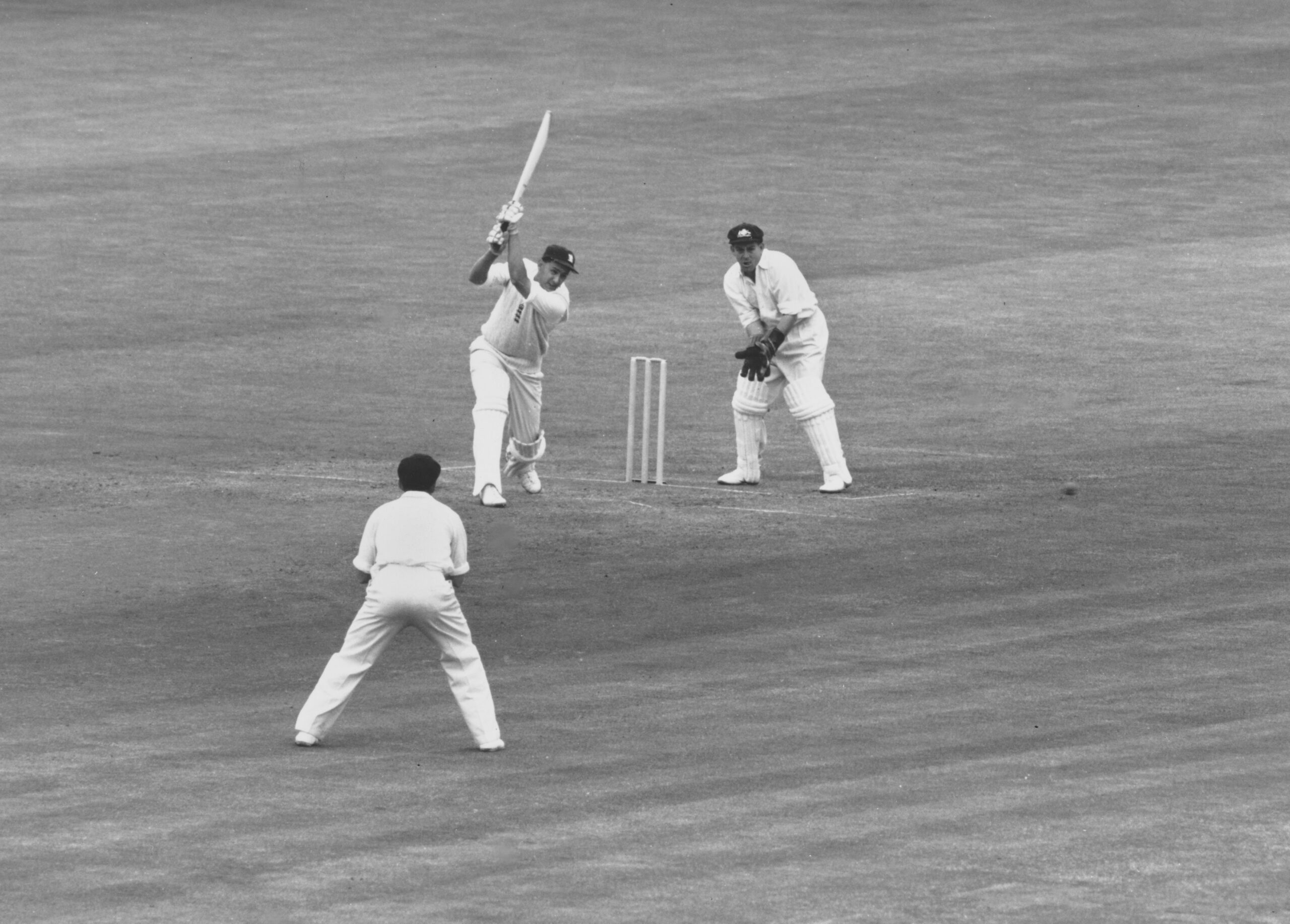Raman Subba Row CBE, who followed a distinguished playing career by becoming one of the powerful administrators in English cricket, has died aged 92. He was England men’s Test oldest player. Richard Spiller outlines his enormous contribution to cricket…
It’s doubtful that anyone has had more influence in shaping Surrey and England cricket than Raman Subba Row over the past 60 years.
A relatively short playing career, which included 13 Tests, was cut short aged 29 by retirement in 1961 but his work in cricket had barely started.
Subba Row saw a game which had barely changed for much of the 20th century and knew that it had to face up to the realities of modern times.
He set about doing just that, loosening the grip of MCC by leading the way in the creation of the Test & County Cricket Board, forerunner of the ECB.
On the other side of the Thames, Subba Row was every bit as busy in shaking up Surrey. Financial oblivion had almost struck in 1970-71 but, first as Chair and then heading the executive board, he transformed The Oval towards being the envied modern stadium it is today. The “Save The Oval” appeal in 1988 was his brainchild.
Subba Row attended Whitgift School – and spent living much of his life in a house with a a gate into Old Whitgiftians’ ground – before three years at Cambridge University, from 1951-53, where he won Blues for cricket and fives.
His first-class debut for Surrey came in 1953 – becoming a member of Stuart Surridge’s all-conquering side for two years without establishing himself – but in 1955 he switched to Northamptonshire, becoming county captain in 1958. An accumulator rather than a stylist, Subba Row’s performances earned him an England debut in 1958 and a finger injury which kept him sidelined for much of the following winter’s Ashes tour was just one of the bad blows suffered by Peter May’s side as they were surprisingly hammered 4-0.
By 1961 he was established at the top of the order, scoring centuries in the first and last Tests. But the latter, at The Oval, proved to be his farewell appearance, averaging a formidable 46 at top level while scoring 14,182 first-class runs at 41. As an amateur, he needed to earn a living.
He was named a Wisden Cricketer of the Year the following spring but his work had barely started. Establishing his own public relations firm, Subba Row’s passion for cricket shone through. He knew that cricket would never have access to public funding while it was controlled by MCC, a private club.
It was explained by his old friend and colleague at The Oval, Bernie Coleman:
“Raman understood, way ahead of anyone else, that we couldn’t have a private club running the national game. He devised the Test & County Cricket Board set-up, to rescue the game from total poverty. Once the board was established, the counties had a say in how things were run, which was important because they were all skint.
“Raman was the man who had the vision and put it down on paper – it was a magnificent document. He was a visionary because he could see how it should be and how we could stay solvent. He was years ahead of the rest.”
Surrey club cricket owes him much, having organised and chaired the inaugural meeting of clubs in the winter of 1966 which led to the founding of the Surrey Championship – despite considerable opposition in some quarters – in the summer of 1968.
Subba Row took over the chair of Surrey’s general committee in 1974 but his most potent years were in running the club’s executive board, from 1979-92. His desire to be involved in every facet of the club’s activities did not please everyone and led to some skirmishes. But over time an ageing cricket ground, which had been patched up after the Second World War and progressed little, became brighter, cleaner and more suited to the modern-day needs of players and spectators. With close colleagues such as Coleman, Derek Newton and Brian Downing – and staff members who respected him enormously but knew the message “Raman is on the rampage” might mean fireworks – the club was transformed.
One project involved rebuilding the perimeter wall, which had become less a barrier than an ornament in places, with the help of apprentices and the London Brick Company. Another saw sponsored cars provided for players for the first time. And when legislation affecting sports stadiums with wooden stands – in the aftermath of the 1985 Bradford City fire disaster – meant the Nets and West stands had to be demolished, putting The Oval’s ability to stage international cricket into question – he enlisted the assistance of Sir Leonard Hutton to front the Save The Oval Appeal.
Subba Row was manager of England’s tour to India in 1981-82, steering the way through a thicket of diplomatic issues, and he chaired the TCCB from 1985-90. Retirement was only ever going to be a relative term and he relished spells as an ICC match referee – overseeing 60 Tests and ODIs – and ECB pitch inspector, working with former Surrey’s Head of Grounds Harry Brind as profitably as they had done many years earlier.
Awarded the CBE for services to cricket in 1991, Raman always found a moment to talk about the game or the people within it, brimming with bright ideas and having the ability to see new horizons invisible to others. He enjoyed having time to watch the new generations of Whitgift pupils and make new friends at the OWs.
Subba Row regarded The Oval as his “second home”, even though in latter years his health was too poor for him to visit. How special was it to him? Anne Bickerstaff, who joined the administrative staff in 1981, told of how it was discovered one Christmas that there was insufficient money in the club account to pay the staff their annual bonus. Subba Row quietly slipped away and returned soon after with money from his own account to ensure those who had worked so hard throughout the year were not let down.
He is survived by his wife Anne, daughter Michele, son Alistair, eight grandchildren and a great-grandchild, his eldest son Christopher having predeceased him in 2021.
A private family funeral will be followed by a memorial service later in the year.












